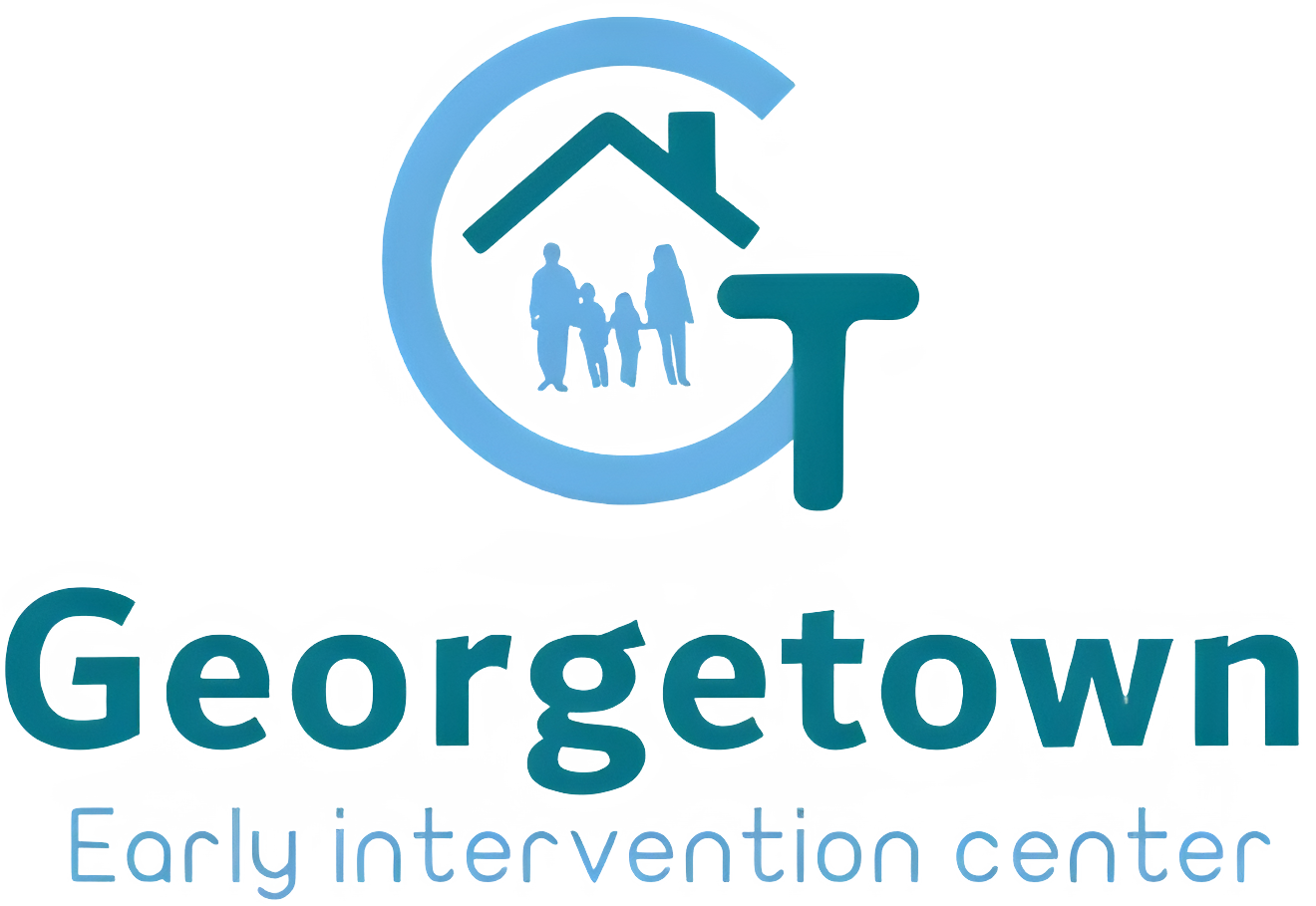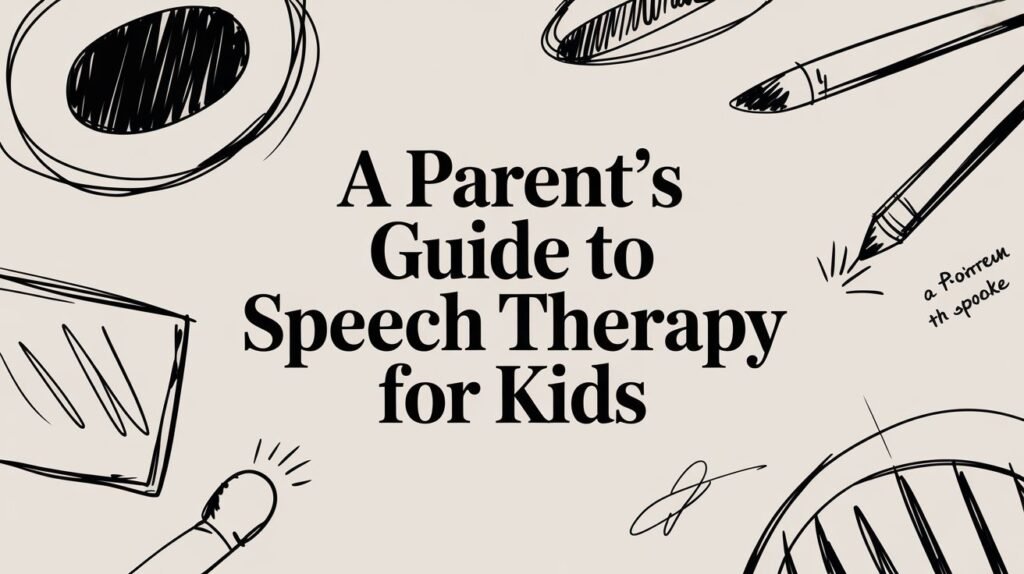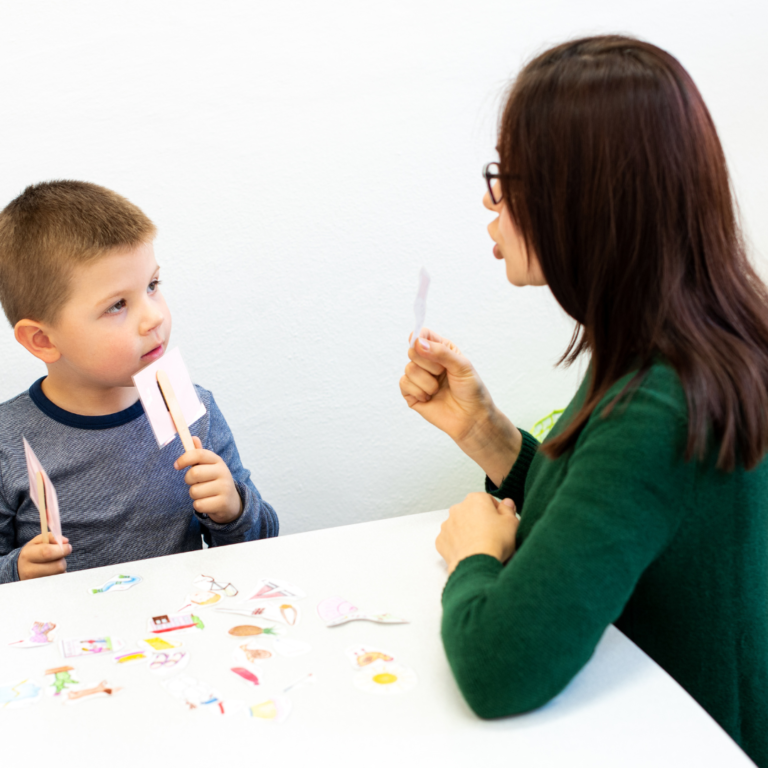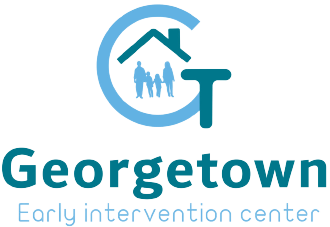Speech therapy for kids is a specialized kind of support designed to help children build the skills they need to communicate clearly and confidently. It tackles everything from the mechanics of making sounds to the nuances of understanding and using language in social settings. The ultimate goal is to empower a child to express their needs, thoughts, and feelings without frustration.
Your Child's Communication Journey
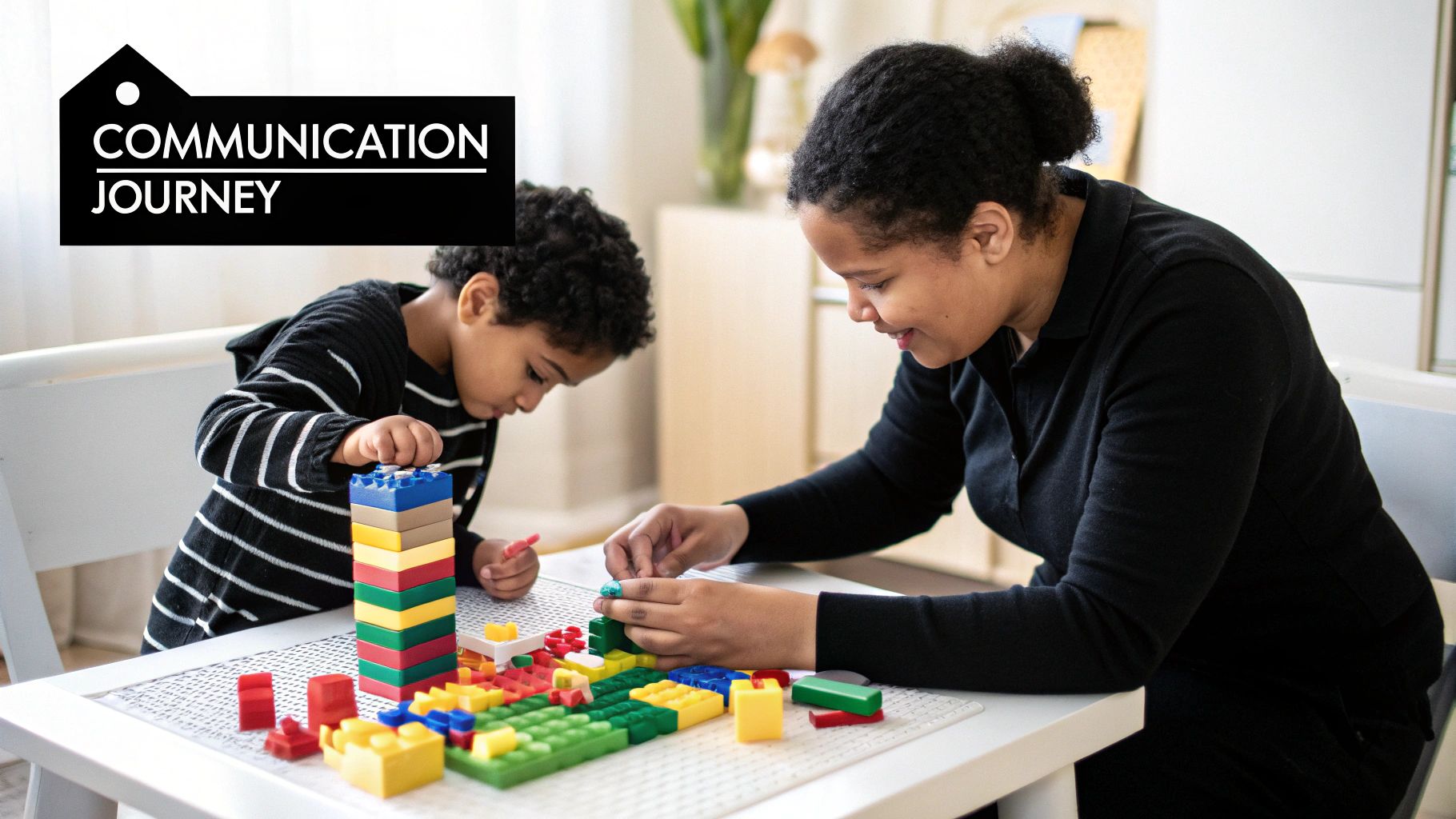
If you're reading this, you’ve already taken the most important first step: paying close attention to your child's communication development. This guide is here to walk with you on that journey, giving you clarity and confidence along the way. We want to completely reframe how you see this process—it’s not a test your child has to pass.
Think of it like learning to build with LEGOs. Every single communication skill—a sound, a word, a gesture—is like one LEGO block. On its own, it has a purpose. But when you start connecting those blocks, you can build something much bigger and more complex. Speech therapy provides the blueprint and the right tools to help your child connect those blocks into a strong, stable foundation for a lifetime of expression.
Demystifying Speech Therapy for Kids
One of the biggest myths about speech therapy is that it's about "fixing" a problem. It’s not. It's about providing personalized support and strategies that empower your child. This is a team effort involving our therapists, your child, and you—their most important communication partner. Here at Georgetown Early Intervention Centre, we know every child is unique, so their therapy plan should be, too.
This process recognizes that communication is so much more than just talking. It’s a rich tapestry woven from different threads:
- Verbal Expression: The actual sounds and words your child uses to speak.
- Receptive Language: How well your child understands what’s being said to them.
- Social Communication: Using language to interact, like taking turns in a conversation or picking up on body language.
- Play Skills: How children learn to communicate, problem-solve, and connect through the natural language of play.
The goal is never to change who your child is. It’s about giving them the tools to express themselves authentically and effectively. We’re building bridges between their inner world and the world around them, making sure they feel heard, understood, and connected.
This guide will pull back the curtain on speech therapy for kids, showing you exactly how it works and what you can expect. We’ll explore how different therapeutic approaches are matched to individual needs, from play-based activities for toddlers to more structured exercises for school-aged children. By understanding the core principles, you can become an even stronger advocate for your child. Together, we can help them find their voice and share it with the world.
Recognizing When Your Child Might Need Support
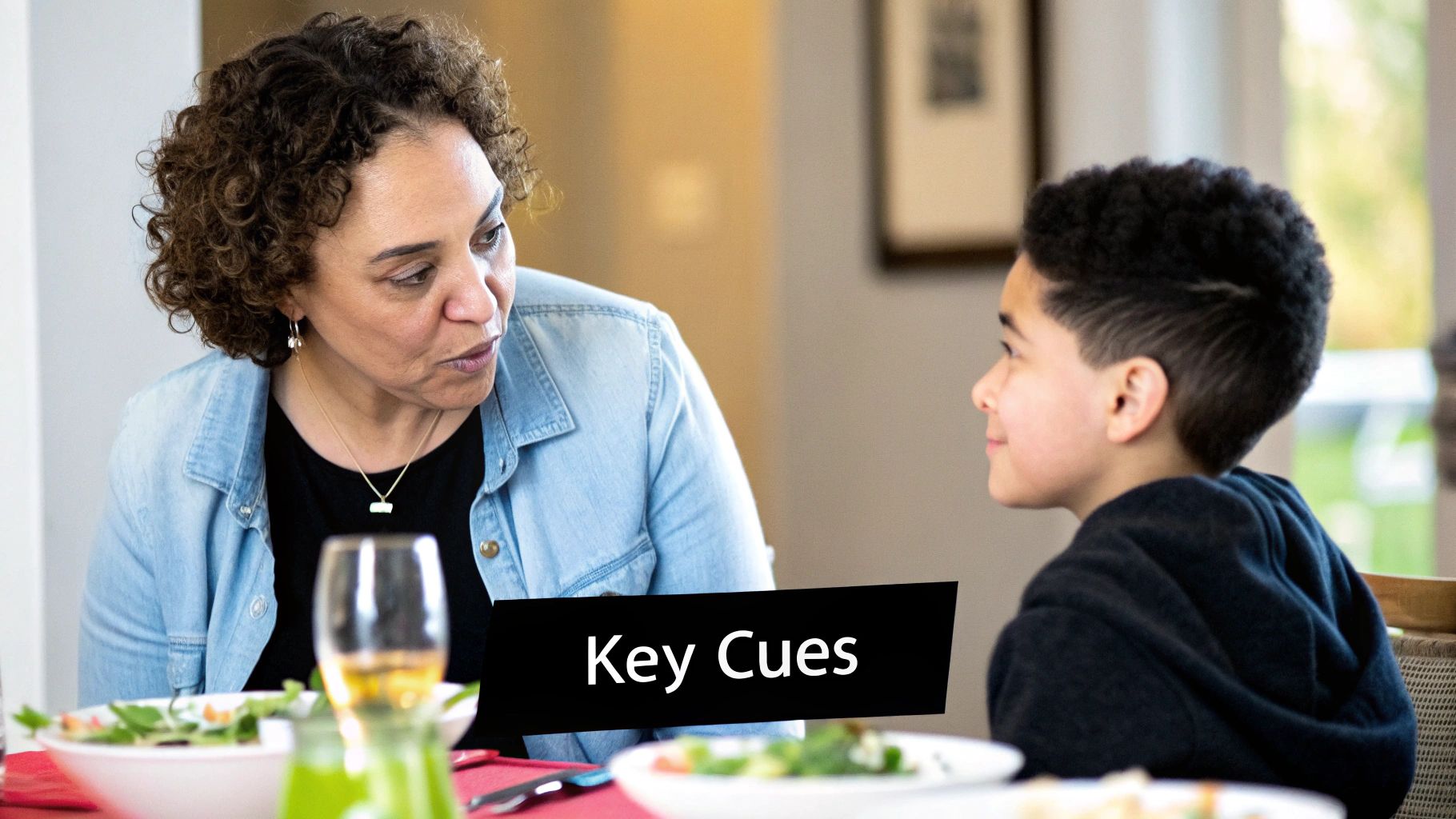
As a parent, you are the world’s leading expert on your child. You know their smiles, their struggles, and every little quirk in between. But let’s be honest, navigating the endless checklists of developmental milestones can feel like you're cramming for a test—one that often creates more worry than clarity.
So, let's set the charts aside for a moment. Instead, let’s think about communication as it happens in real life: during a messy dinner, a rowdy playtime, or a quiet bedtime story.
This is where you’ll see the real picture. Tuning into these everyday moments helps you understand your child’s unique way of connecting and notice the subtle signs that might point to a need for extra support. The goal isn’t to become a diagnostician overnight. It’s to build your confidence so you know when it’s the right time to reach out to a professional.
Decoding Your Child's Communication Cues
To really get a feel for how your child is doing, we can look at three main areas of communication. Think of these as different tools in their communication toolbox. Some kids might be great with one tool but need a little help sharpening another. That’s exactly where speech therapy for kids comes in.
Articulation (Making Sounds): This is all about the physical act of forming sounds. Is it often tough for grandparents or even you to understand what your child is saying? Do they still say "wabbit" instead of "rabbit" long after their friends have moved on?
Language (Using & Understanding Words): This is a two-way street. It includes what they understand (receptive language) and what they can say (expressive language). Do they seem lost when you give a simple two-step direction, like "pick up your cup and bring it to the sink"? Is their vocabulary noticeably smaller than their peers, or do they have a hard time putting words together?
Social Communication (Interacting with Others): This is the magic of using language to connect. Does your child make eye contact, understand the back-and-forth of a conversation, or use gestures like pointing to show you something exciting?
Watching for these things during your normal routine gives you so much more insight than any formal quiz. When you’re playing, see if they can ask for the blue block or tell you what they’re building. These are the moments that hold all the clues.
Milestones Versus Potential Concerns
It's so important to remember that every child truly does develop at their own pace. A small hiccup in one area is rarely a cause for panic. What we’re looking for are patterns that might suggest it’s time to take the next step. To help with that, here’s a straightforward comparison of what’s typical versus what might be worth a chat with a professional.
If there's one thing to take away, it's this: trust your gut. If you have that persistent feeling that something isn’t quite clicking with your child's communication, it is always worth looking into. An evaluation is simply a proactive, positive step—it will either give you peace of mind or a clear path forward.
Think of the table below not as a diagnostic tool, but as a way to help you organize your thoughts and observations.
Developmental Milestones vs Potential Concerns
| Age Group | Typical Communication Milestones | Potential Signs to Discuss with a Professional |
|---|---|---|
| Toddlers (1-3 Years) | Begins using single words around 12 months and two-word phrases by age 2. Follows simple one-step commands. | Has a vocabulary of fewer than 50 words by age 2. Does not point or use gestures to communicate. Is not combining words into simple phrases by age 2.5. |
| Preschoolers (3-5 Years) | Speaks in sentences of three or more words. Can tell simple stories and be understood by unfamiliar listeners most of the time. | Speech is very difficult to understand. Struggles to form sentences or answer simple "who," "what," and "where" questions. Shows little interest in interacting with peers. |
| School-Aged (5+ Years) | Uses complex sentences and can explain events in detail. Understands grammar rules and uses language to build friendships. | Has difficulty with reading and writing skills. Struggles to follow multi-step directions in the classroom. Avoids social situations due to communication challenges. |
Remember, this is just a guide. Your observations, paired with a professional evaluation, are the best way to get a full picture of your child’s needs and how to best support them.
Exploring Different Kinds of Speech Therapy
Speech therapy for kids isn’t a one-size-fits-all solution. It’s more like a custom-built toolkit. Think of a speech-language pathologist (SLP) as a master craftsperson who knows exactly which tool to pull out for a specific job. You wouldn't use a screwdriver to hammer a nail, right? In the same way, an SLP carefully selects the right therapeutic approach for a child's unique communication needs.
This personalized strategy is what makes modern speech therapy so powerful. The goal is always to match the right technique to the right challenge, creating a plan that feels more like guided play than hard work. By understanding the different kinds of therapy out there, you can see the thoughtful process that goes into building your child’s plan from the ground up.
Targeting Specific Communication Skills
Different therapy approaches are designed to tackle distinct areas of communication. A child who struggles to make the "r" sound has very different needs than one who has a hard time following social cues or putting sentences together. The SLP's first move is always to pinpoint the core challenge and then choose a proven method to address it.
Here are a few of the most common approaches you might come across:
Articulation Therapy: This is probably what most people picture when they think of speech therapy. It zeroes in on the physical production of sounds. If a child says "wabbit" instead of "rabbit," the therapist will use games, visual cues, and repetition to teach them how to position their tongue and lips to make the /r/ sound correctly.
Language Intervention Therapy: This approach is all about helping a child understand and use language. It tackles everything from building vocabulary and learning grammar (like using the right verb tenses) to forming complete, logical sentences. It’s about teaching the rules of language so kids can build more complex thoughts.
Fluency Therapy: For kids who stutter, fluency therapy offers practical strategies to help them speak more smoothly. This might involve techniques for slowing down their speech, controlling their breathing, and easing the physical tension and anxiety that can come with speaking.
These are just a handful of examples, but they show how each intervention is tailored to be precise and goal-oriented.
The Power of Play in Therapy
For most young children, the best learning happens when they don't even know it's happening. That’s the magic behind play-based therapy, a cornerstone of pediatric speech intervention. Instead of sitting at a table doing drills, the child is immersed in fun, structured activities that are secretly designed to practice specific communication skills.
Imagine a child who needs to work on putting two words together. An SLP might set up a toy car ramp. As they hold a car at the top, they might say, "Ready, set…" and wait. The excited child, eager to see the car zoom, is gently prompted to say "car go" or "my turn." The learning is woven right into the fun.
Play is the natural language of childhood. By meeting children in their world of play, therapists can build rapport, reduce pressure, and make skill-building a joyful and motivating experience. This approach fosters genuine communication, not just rote memorization.
This method is especially powerful for toddlers and preschoolers. It helps them develop crucial social skills like taking turns and sharing focus, all while hitting their specific speech and language goals in a way that feels natural and engaging.
Specialized Approaches for Complex Needs
Sometimes, a child's communication challenges are connected to other conditions, which calls for even more specialized types of therapy. An SLP with expertise in specific areas can provide support that gets to the root cause of the difficulty, not just the symptoms.
For example, a child with Childhood Apraxia of Speech (CAS) struggles with the brain-to-muscle coordination needed for speech. Standard articulation therapy often isn't enough. They might need a method like PROMPT (Prompts for Restructuring Oral Muscular Phonetic Targets), where a therapist uses gentle touch cues on the child's face to guide their jaw, lips, and tongue into the right positions.
Likewise, children on the autism spectrum often thrive with Social Communication Therapy. This type of therapy focuses on the practical, social side of language—things like reading non-verbal cues, understanding sarcasm, or navigating the back-and-forth of a good conversation. Understanding these diverse methods can give you confidence that your child’s therapy plan is truly built just for them.
Why Early Intervention Is So Important
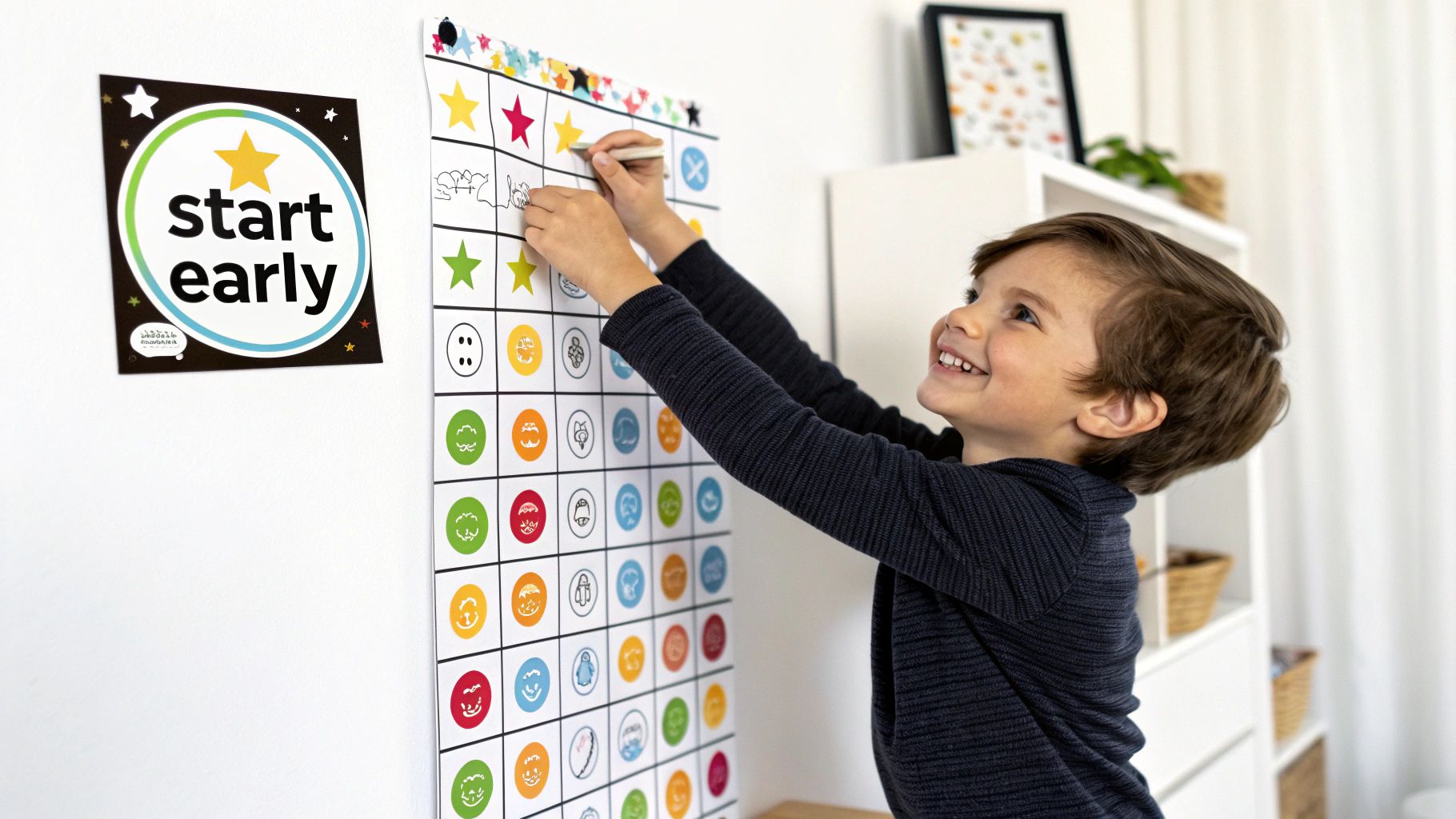
When you first notice your child might be struggling to communicate, it’s easy to fall into the "wait and see" trap. But the evidence is crystal clear: trusting that gut feeling and seeking help early is one of the best things you can do for your child. Getting ahead of a speech or language challenge isn’t just about fixing a few sounds; it’s about unlocking your child’s ability to connect with the world.
Think of a child's brain in those early years as a young sapling. Its branches are incredibly flexible and growing at a remarkable pace. This period is a prime window for learning. Providing support now is like gently guiding a branch to grow strong and straight—it's far more effective than trying to correct its path after it’s already matured. This incredible brain flexibility, or neuroplasticity, makes a child’s mind exceptionally ready to build new communication skills.
Addressing these issues early on prevents small stumbles from becoming major roadblocks. A little frustration with saying certain words can easily snowball into a reluctance to speak at all, which can then affect friendships and how they participate in the classroom. Timely speech therapy for kids steps in before these patterns take hold, turning potential struggles into moments of growth and newfound confidence.
The Ripple Effect of Early Support
The impact of early speech therapy reaches far beyond just clearer pronunciation. Communication is the bedrock on which almost every other skill is built. When a child can confidently express their thoughts, feelings, and needs, you see the positive effects ripple through every part of their life.
Academic Readiness: Strong language skills are one of the best predictors of reading success. Kids who start school with a solid communication foundation are better prepared to tackle phonics, follow directions, and connect with their teachers.
Social and Emotional Growth: Let's face it, making friends is all about communication. Therapy gives children the tools and confidence to join in conversations, share ideas, and even work through disagreements, which helps combat feelings of being left out.
Enhanced Self-Esteem: There's nothing more disheartening for a little one than feeling misunderstood. When therapy helps them find their voice, their self-worth soars. They become more eager to participate in everything around them.
Early intervention is all about being proactive, not reactive. It’s about giving children the communication tools they need before the social and academic pressures pile on, setting them up for a lifetime of success.
This proactive approach empowers kids to hit their developmental milestones with confidence, turning what could have been a source of stress into a story of achievement.
A Growing Focus on Early Identification
Thankfully, the conversation around the importance of early support is getting louder. This shift is especially clear in places like North America and Europe, where new initiatives are making it easier for parents to get help sooner rather than later.
In the United States, for example, the CDC's Early Hearing Detection and Intervention (EHDI) program ensures every newborn gets a hearing screening. This is huge because it helps catch potential speech issues right from the start. And with conditions like Autism Spectrum Disorder (ASD) now identified in about 1 in 36 children, the demand for specialized speech therapy for kids has rightly grown. You can see more on these trends in the latest speech therapy services market reports.
Preparing for Your First Therapy Session
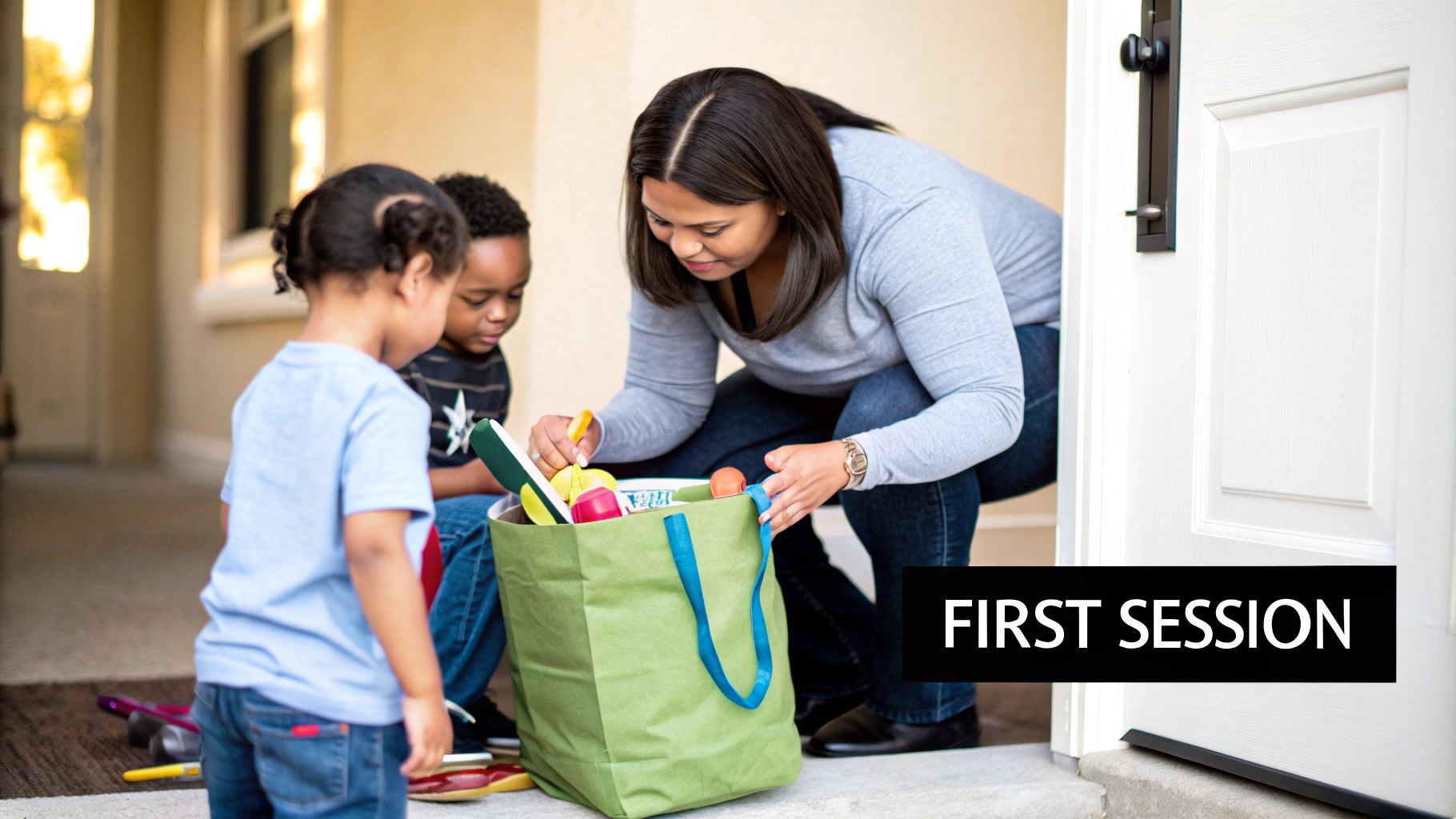
Starting any new journey can bring a mix of excitement and nerves, and beginning speech therapy for kids is no different. Knowing what to expect and how to prepare can transform that uncertainty into confidence, setting your child—and you—up for a positive experience right from the very first session.
This first meeting is all about partnership. It’s a chance for you to share what you know as the true expert on your child and for the speech-language pathologist (SLP) to share what they see from a clinical perspective.
Think of it like building a bridge. You're bringing the materials from your side—all your day-to-day experiences and observations. The therapist is bringing their professional expertise from the other. Together, you’ll construct a solid foundation for your child's communication journey.
What to Gather Before Your Appointment
A little organization can make that first session feel so much smoother. Having key information ready helps your SLP get a complete picture of your child, which means less time on paperwork and more time building rapport.
Try putting together a small folder with these items:
- Developmental Notes: Jot down a few key milestones. When did your child babble, say their first word, or start stringing words together? Don't stress about exact dates; a general idea is perfect.
- A Quick Video: If you can, bring a short clip (under a minute) on your phone of your child talking or playing. This gives the therapist a wonderful, natural glimpse into their communication style at home.
- Relevant Reports: Include any reports from teachers, pediatricians, or other specialists. This provides valuable context and helps avoid repeating assessments.
- Your List of Questions: Don’t be shy! Write down everything you’re wondering about. No question is too small, from the therapy process itself to how insurance works.
This simple prep ensures your concerns are front and center and helps the SLP start crafting the most effective plan for your child.
What to Expect During the Initial Assessment
The first session is often less about formal tests and more about making a connection. For a child, trusting a new adult is a big deal, so the SLP’s main goal is to create a safe, fun, and welcoming space. And that usually happens through play.
While it might just look like they’re playing with toys on the floor, the SLP is making dozens of professional observations. They’re noting how your child asks for a toy, takes turns, makes eye contact, and pronounces different sounds—all in a relaxed, low-pressure way.
The initial assessment is a collaborative discovery process. The therapist is evaluating skills, but more importantly, they are getting to know the unique, wonderful child behind the communication challenge. Rapport is the key that unlocks progress.
Talking to Your Child About Therapy
How you frame speech therapy for your child can make all the difference. Try to avoid language that suggests something is "wrong" or needs to be "fixed." Instead, present it as a fun, new activity where they get to play and learn with a special helper.
Here are a few positive ways to talk about it:
- Frame it as a fun activity: "We're going to meet Ms. Sarah! She has so many cool toys, and she's going to play games with you that help make your words super strong."
- Focus on the skill, not the problem: "You know how some words feel a little tricky in your mouth? We're going to a special teacher who shows you fun ways to make them easier to say."
- Keep it simple and positive: "We're starting speech therapy. It's a place you'll go each week to play and learn about talking."
When you approach this new step with positivity and preparation, you lay the groundwork for a successful and empowering experience for everyone.
Expanding Global Access to Speech Therapy
The movement to help children find their voice isn't confined by borders; it's a growing global priority. For countless families in areas where specialized services were once just a distant dream, a wave of positive change is creating brand new possibilities. This isn't just about exporting old methods. It’s a worldwide recognition that a child's ability to communicate is fundamental to their health, happiness, and future.
Technology, of course, is a massive driver of this change, knocking down geographical barriers that have stood for generations.
Picture a family living in a remote village, hundreds of miles from the nearest city. Not long ago, getting consistent speech therapy for kids would have been next to impossible. Today, teletherapy can connect that same family with a qualified speech-language pathologist anywhere in the world, bringing expert guidance right into their home through a screen. This digital bridge is leveling the playing field, making expert support more reachable than ever before.
A Rising Tide of Awareness and Innovation
Beyond just the tech, there's a powerful shift in mindset happening. Health ministries and school systems across the globe are starting to weave communication support into their core services. This rising awareness means more children are being identified early, and innovative, culturally sensitive programs are being built from the ground up to meet their unique needs.
You can see this trend taking hold in different regions as they strengthen their healthcare infrastructure. In the Middle East, for instance, countries like Turkey and Israel are putting a much greater emphasis on pediatric speech therapy. And while specific data for the Arabian Peninsula is still emerging, the broader Middle East & Africa region is expected to see a surge in demand, fueled by this growing awareness. Digital platforms are proving instrumental here, extending a helping hand to previously underserved communities. You can learn more about the growth of children's speech therapy services on archivemarketresearch.com.
This global focus is simply creating a more inclusive world for children, wherever they are.
The core message here is one of genuine hope and progress. Every new clinic that opens, every teacher who is trained in early identification, and every successful teletherapy session represents another child being given the tools to find their voice and connect with the world.
This worldwide effort is about so much more than therapy sessions. It's a collective commitment to make sure every single child gets the chance to be heard. As awareness continues to spread and technology keeps opening new doors, the future of pediatric speech support looks brighter and far more accessible for families all over the globe. No child's potential should be limited by their zip code.
Common Questions About Speech Therapy
Diving into the world of speech therapy for kids naturally brings up a lot of questions. Wondering about timelines, your own role, and how it all works is completely normal. We get it. So, let's walk through some of the most common questions we hear from parents, giving you clear, straightforward answers to help you feel confident moving forward.
Think of this as your practical guide to the questions that are probably already on your mind.
How Long Will My Child Need Speech Therapy?
This is easily the most-asked question, and the honest answer is: it’s different for every single child. The length of therapy really depends on your child's specific goals, their age, and—this is a big one—how often you practice the new skills at home.
A child working on a simple lisp might wrap up in just a few months. On the other hand, a child with more complex communication needs will likely benefit from longer-term support. Your speech-language pathologist will map out clear, achievable goals from the start and give you regular updates on your child's progress and what to expect next.
Your involvement is the single most important factor in your child's success. Therapy sessions provide the tools, but it's the practice during everyday routines that makes those new skills stick.
What Is My Role as a Parent in This Process?
Your role is everything. You are your child’s most important teacher and communication partner, hands down. Your therapist acts as your coach, giving you simple, effective strategies you can weave into your daily life without adding more to your plate.
It’s less about scheduled "practice time" and more about turning everyday moments into learning opportunities:
- Bath time? Perfect for practicing new sounds while splashing with rubber ducks.
- Driving to school? A great time to work on storytelling by chatting about what you see out the window.
- Dinner? You can build vocabulary just by talking about the textures and tastes of the food you're eating.
This consistent, gentle reinforcement is what truly cements the skills learned in therapy and leads to lasting progress.
Will Insurance Cover Speech Therapy?
Coverage for speech therapy for kids can vary quite a bit from one insurance plan to the next. The good news is that many plans do cover services when they’re considered "medically necessary" for a diagnosed communication disorder.
However, some policies might limit the number of sessions covered in a year or have other specific requirements. Your best first move is always to call your insurance provider directly. Ask them specifically about your benefits for pediatric speech-language pathology services so you know exactly what to expect and can avoid any surprises.
Is Online Speech Therapy as Effective as In-Person?
For many kids, the answer is a big yes! A growing body of research shows that teletherapy can be incredibly effective, especially for school-aged children who are already comfortable and engaged with screens. It offers amazing convenience and gives you access to specialists you might not have in your immediate area.
Of course, it's not a one-size-fits-all solution. Your SLP will work with you to decide if online therapy is the right fit based on your child's age, personality, and specific therapy goals.
Article created using Outrank
